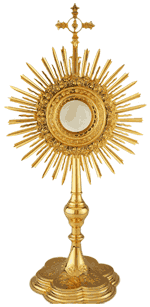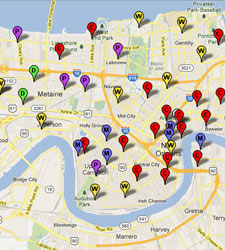As I mentioned in the bulletin and at Mass several weeks ago, we will start using some of the Latin Mass parts in our Lenten Sunday Masses. On the opposite page are those parts. They are the “Sanctus” (Holy, Holy, Holy), the “Mysterium Fidei” (the Mystery of Faith) and the “Agnus Dei” (the Lamb of God). Many of the older members of the parish will be quite familiar with the Sanctus and the Agnus Dei, if not the Mysterium Fidei, but everyone will find that they are very easy to chant, once you get used to it.
As I wrote in that earlier bulletin article, the Mass was song almost exclusively in Latin from the earliest days of the Church, and certainly from the 3rd and 4th centuries.  In the middle of last century, Mass in the “vernacular” (the common, local language) began to be the norm. Although that was preferable for most people because it allowed for a more active participation when people could understand the words of the Mass, it also cut us off from a very, very long liturgical tradition. For centuries, you could go from Rome to Greece to England to Africa and hear Mass celebrated in the exact same way. Now, when we travel to Cancun we will likely hear a Mass that we can’t understand. And many of our new Mexican and Central American neighbors can’t understand all that is said in our English Mass. So why the Latin? Well, the Holy Father has encouraged us to stay connected to our long tradition. And singing the same Mass parts that are sung in the Basilica of St. Peter at the Vatican helps us to remember that we are members of the One, Holy, Catholic and Apostolic Church. Gregorian Chant has been around for more than 1400 years! It’s beautiful, it’s melodic, and it’s actually easier to sing than some of our modern hymns. I hope you will enjoy it!




